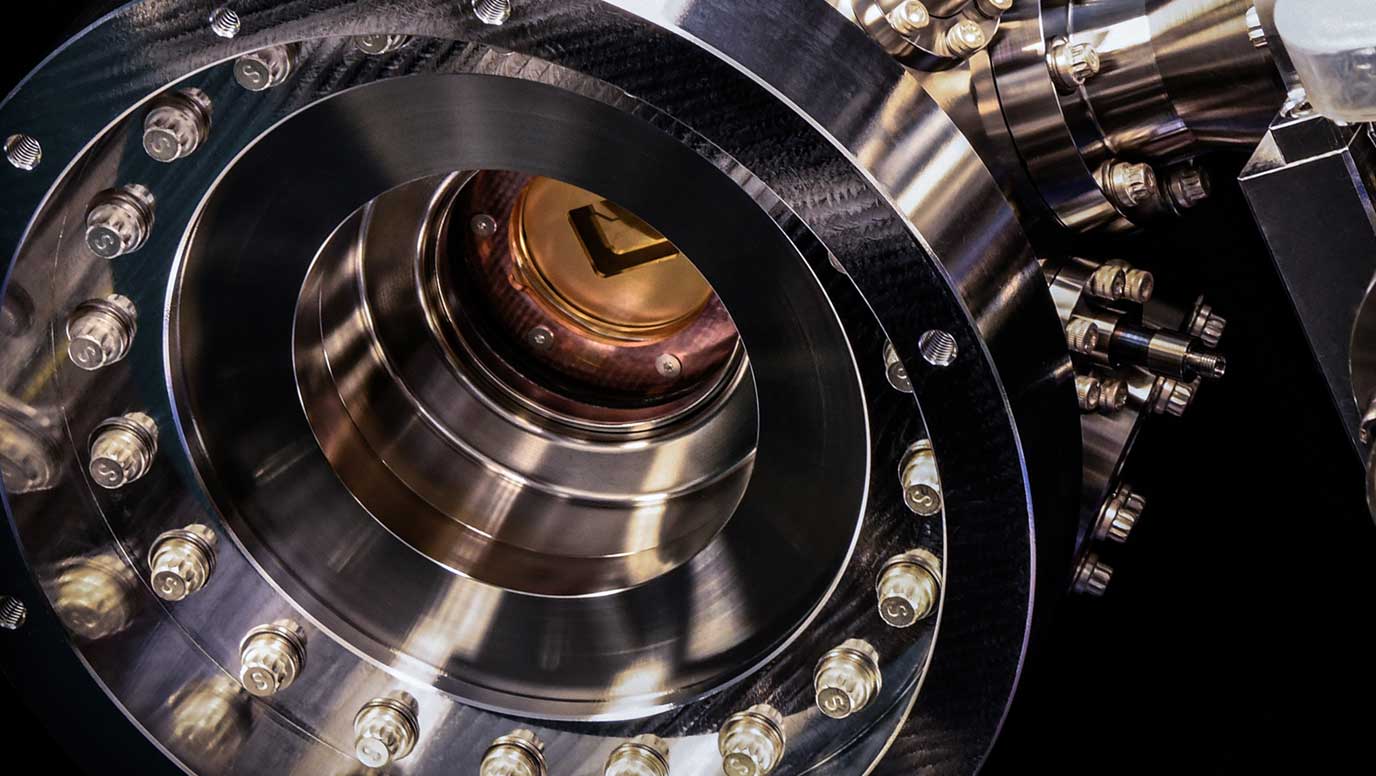Quantinuum and Oxford Ionics in DARPA elite for Quantum Benchmarking Initiative

Oxford Ionics, a world leader in trapped-ion quantum computing, has also been chosen for the first stage of the new Quantum Benchmarking Initiative (QBI) programme. Both companies also have strongholds in Colorado.
DARPA’s QBI aims to assess the feasibility of building an industrially useful quantum computer by 2033. Successful QBI performers will advance through stages A, B, and C; Stage A requires performers to describe their utility-scale quantum computer with a path to near-term realisation, where utility-scale means the computational value exceeds costs.
Boasting the industry's most advanced quantum systems and proven ability to scale, $10 billion valued Quantinuum is on track to deliver utility-scale quantum computing by the early 2030s.
As validated in a recent independent benchmarking study by a group of institutions at the forefront of quantum computing research, Quantinuum’s quantum systems are the highest performing in the industry.
Last year, Quantinuum published its development roadmap, outlining a path to a universal, fully-fault tolerant quantum computer by 2029. Beyond this public roadmap, Quantinuum plans to scale to even larger machines in the early part of the 2030s, aligning with the objectives of QBI.
“We are honoured to collaborate with DARPA and look forward to working closely with their test and evaluation team as they assess our roadmap and technological approach,” said Dr. Rajeeb Hazra, President and CEO of Quantinuum.
“With our roadmap firmly on track, we are confident in our ability to deliver on DARPA’s objectives for QBI.”

Global tech giants Microsoft and NVIDIA will take part in Quantinuum’s Stage A effort, building on their long-standing collaborations with Quantinuum in advancing commercially scalable quantum computing.
Waseem Shiraz, SVP of Strategic Initiatives at Quantinuum and a member its founding team, enthused: “DARPA has brought together a world-class verification and validation team to determine whether it's possible to build an industrially useful quantum computer by 2033.
“As perhaps the most significant undertaking of benchmarking taking place in quantum computing right now, QBI will reshape the industry. We look forward to working with DARPA’s evaluation team as they assess our technology roadmap and we are confident in our ability to deliver on the challenge set forth.”
Quantinuum’s over 550 employees, including 370+ scientists and engineers, across the US, UK, Germany, and Japan, can safely be said to be driving the quantum computing revolution.
Oxford Ionics was chosen after demonstrating its existing technology capabilities and its clear roadmap towards fault-tolerant quantum computers. Its proposed approach rests on three crucial pillars: unmatched operation fidelities, unparalleled scalability, and built using technologies that exist today.
Specifically, QBI is designed to rigorously verify and validate whether any quantum computing approach can achieve utility-scale operation – meaning its computational value exceeds its cost – by 2033.
Three more companies are in talks with DARPA about their potential contributions to the project so the current 15-strong cohort could be strengthened to 18. It remains to be seen whether other Cambridge-based leaders in the field make the cut.
Joe Altepeter, DARPA QBI program manager, said: “For the chosen companies, now the real work begins. Stage A is a six-month sprint in which they’ll provide comprehensive technical details of their concepts to show that they hold water and could plausibly lead to a transformative, fault-tolerant quantum computer in under 10 years.”
Companies that successfully complete Stage A will move to a yearlong Stage B, during which DARPA will rigorously examine their research and development approach, followed by a final Stage C where the QBI independent verification and validation (IV&V) team will test the companies' computer hardware.
Altepeter added: “During Stage B we'll thoroughly review all aspects of their R & D plans to see if they can go the distance – not just meet next year's milestones – and stand the test of trying to build a transformative technology on this kind of a timeline.
“Those who make it through Stages A and B will enter the final portion of the program, Stage C, where a full-size IV&V team will conduct real-time, rigorous evaluation of the components, subsystems, and algorithms – everything that goes into building a fault-tolerant quantum computer for real. And we’ll do all these evaluations without slowing the companies down.”
QBI is not a competition between companies; rather, it aims to scan the landscape of commercial quantum computing efforts to spot every company on a plausible path to a useful quantum computer.

Oxford Ionics co-founder and CEO, Dr Chris Ballance, said: “We are thrilled to have been selected by DARPA to advance to Stage A of QBI, which serves as clear validation of the power of our approach.
“Since our inception, Oxford Ionics has pioneered a revolutionary process to building market-making quantum computers by combining the highest performing quantum platform in the world with the might of the existing semiconductor supply chain. We look forward to working with DARPA to demonstrate how this technology will usher in the next era of compute power.”
At the core of Oxford Ionics’ quantum computers is its patented Electronic Qubit Control technology, which uses electronics instead of lasers to control its atomic qubits.
Oxford Ionics has rapidly proven and commercialised this technology. In 2024, it closed $20 million in sales and works with a range of partners – from quantum software and error correction providers to large enterprises like Airbus – to conduct critical applications research using its hardware.
Oxford Ionics’ global team includes over 80 employees across physics, quantum architecture, engineering, software and business and expects to triple headcount over the next 18 months as the business scales internationally.
Companies that have so far made Stage A of the QBI:
- Alice & Bob — Cambridge, Massachusetts, and Paris, France (superconducting cat qubits)
- Atlantic Quantum — Cambridge, Massachusetts (fluxonium qubits with co-located cryogenic controls)
- Atom Computing — Boulder, Colorado (scalable arrays of neutral atoms)
- Diraq — Sydney, Australia, with operations in Palo Alto, California, and Boston, Massachusetts (silicon CMOS spin qubits)
- Hewlett Packard Enterprise — Houston, Texas (superconducting qubits with advanced fabrication)
- IBM — Yorktown Heights, NY (quantum computing with modular superconducting processors)
- IonQ — College Park, Maryland (trapped-ion quantum computing)
- Nord Quantique — Sherbrooke, Quebec, Canada (superconducting qubits with bosonic error correction)
- Oxford Ionics — Oxford, UK and Boulder, Colorado (trapped-ions)
- Photonic Inc. — Vancouver, British Columbia, Canada (optically-linked silicon spin qubits)
- Quantinuum — Broomfield, Colorado (trapped-ion quantum charged coupled device (QCCD) architecture)
- Quantum Motion — London, UK (MOS-based silicon spin qubits)
- Rigetti Computing — Berkeley, California (superconducting tunable transmon qubits)
- Silicon Quantum Computing Pty. Ltd. — Sydney, Australia (precision atom qubits in silicon)
- Xanadu — Toronto, Canada (photonic quantum computing).


